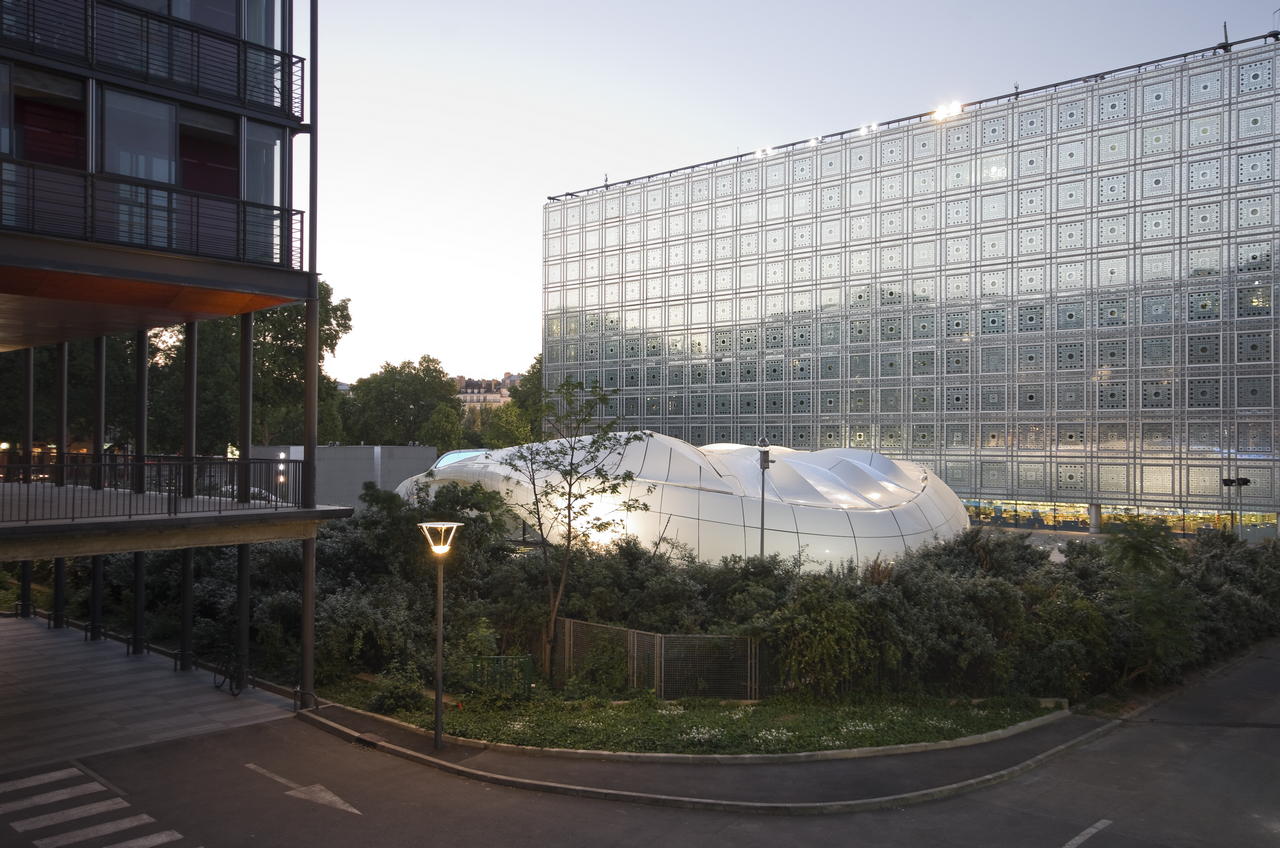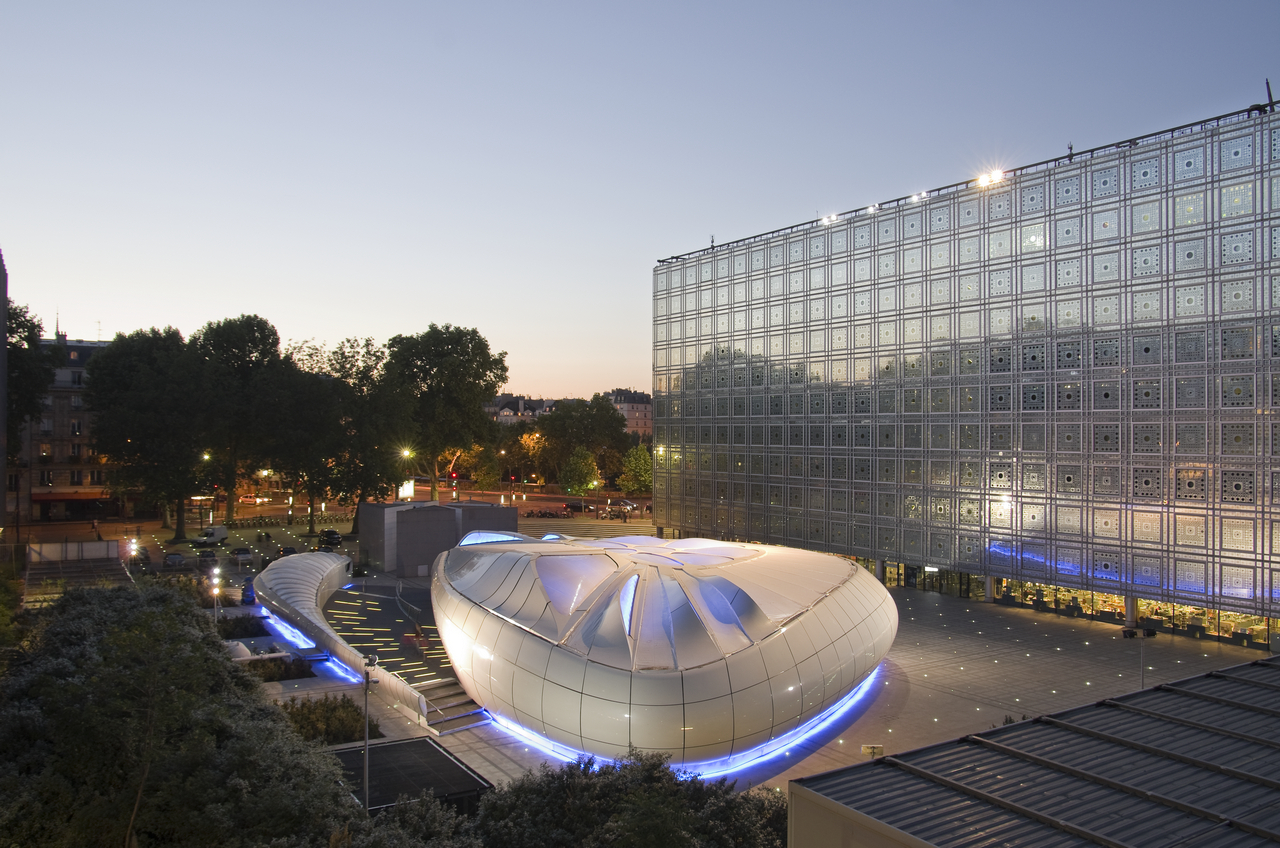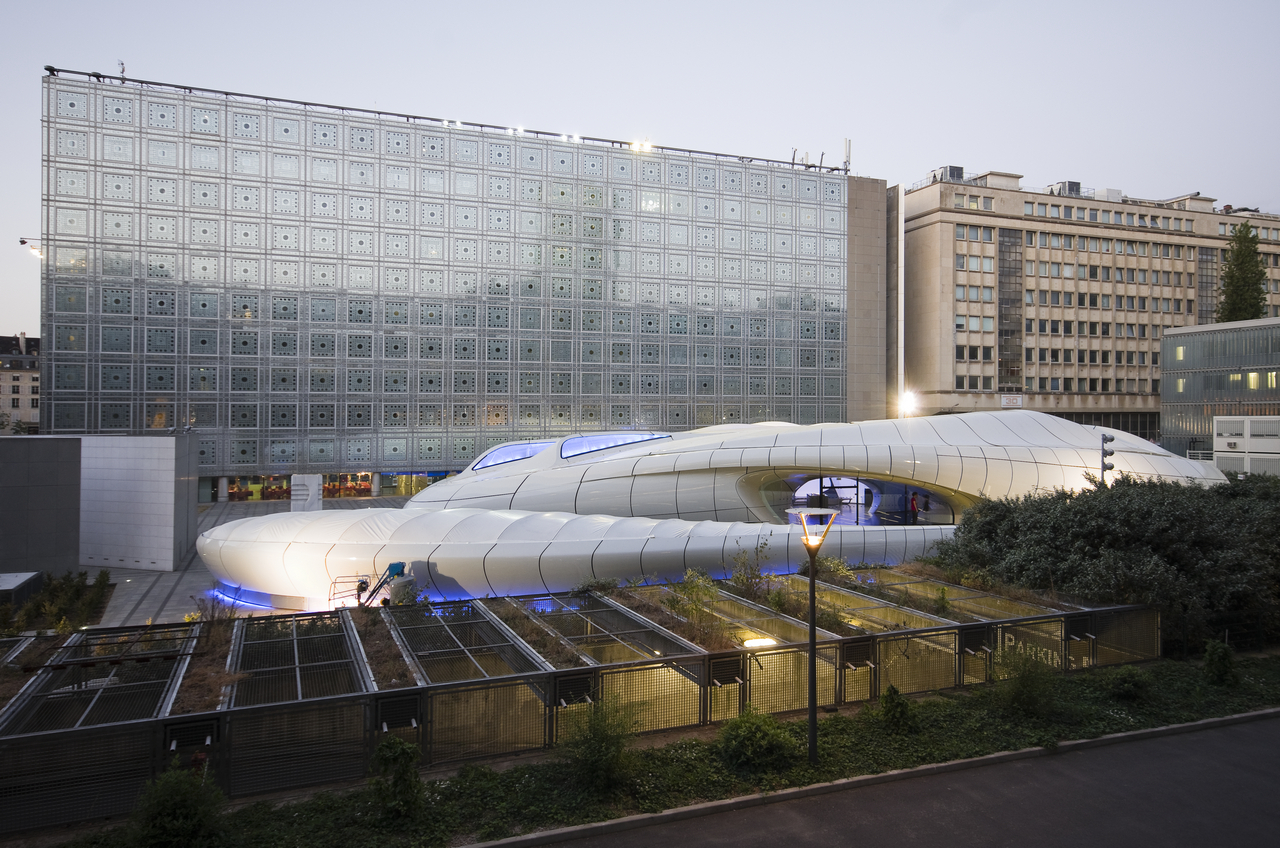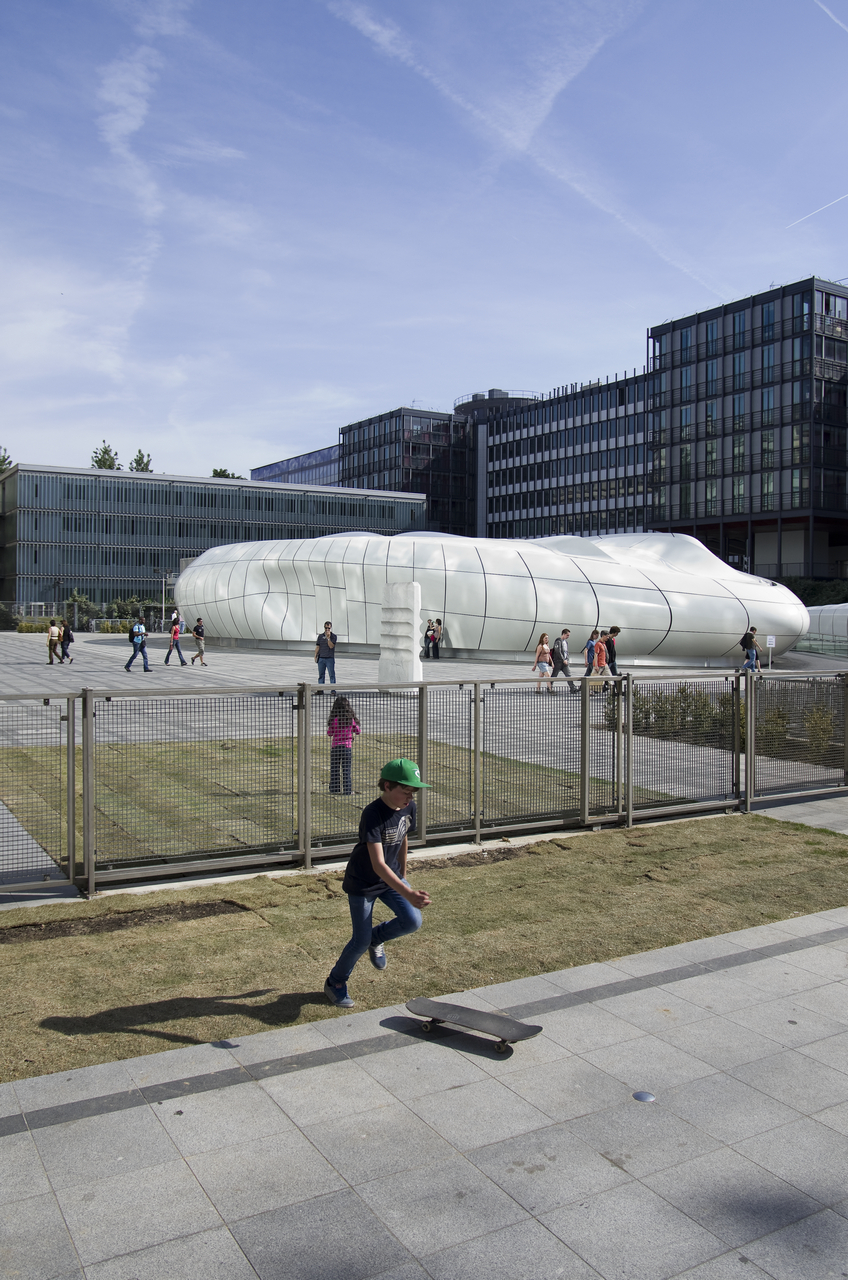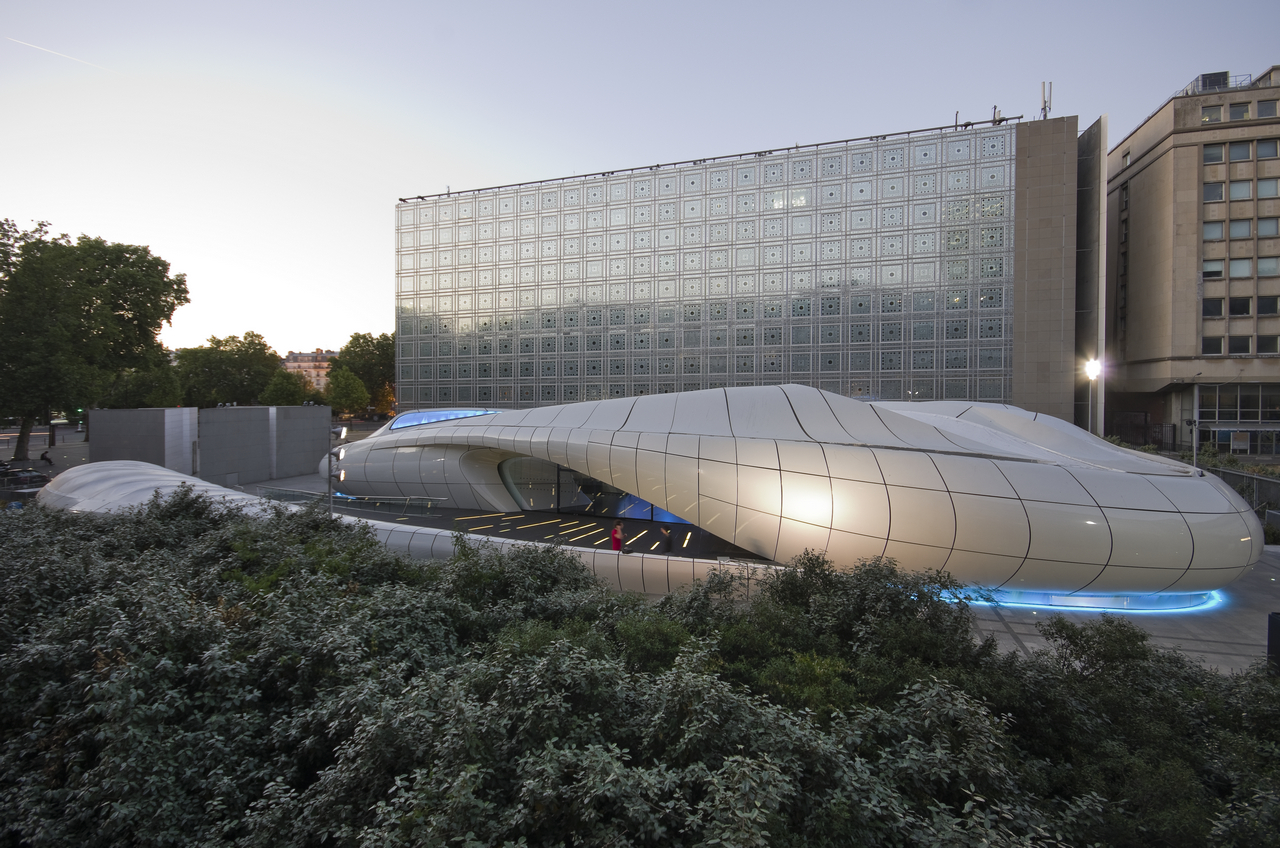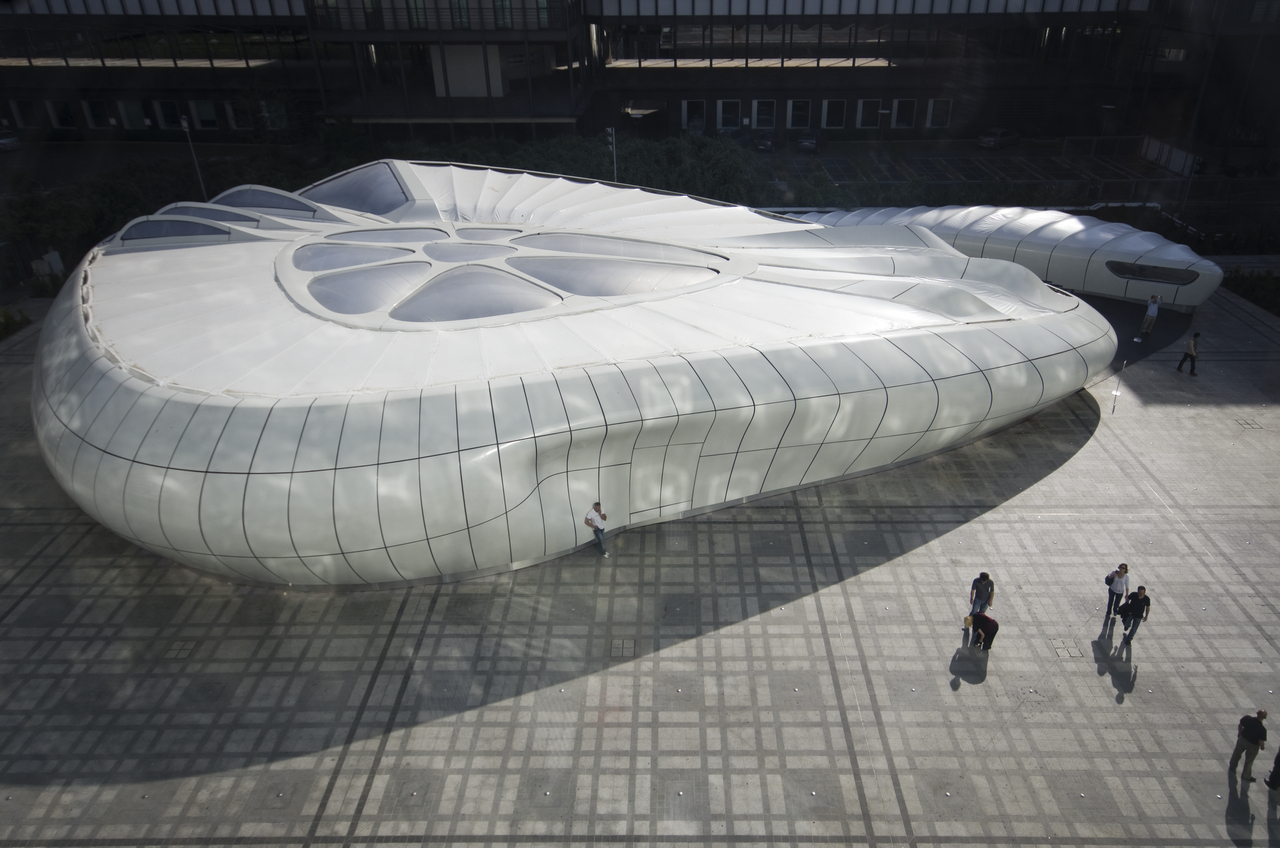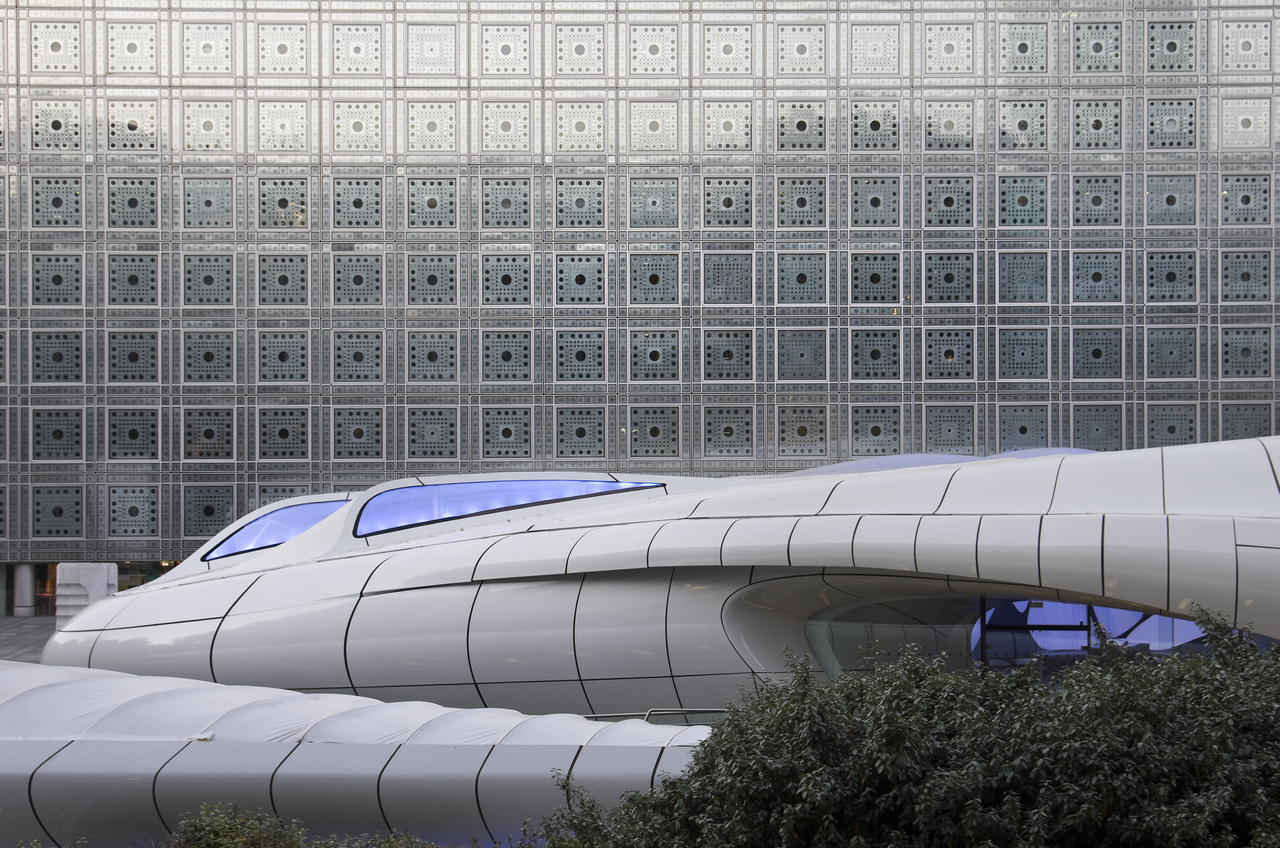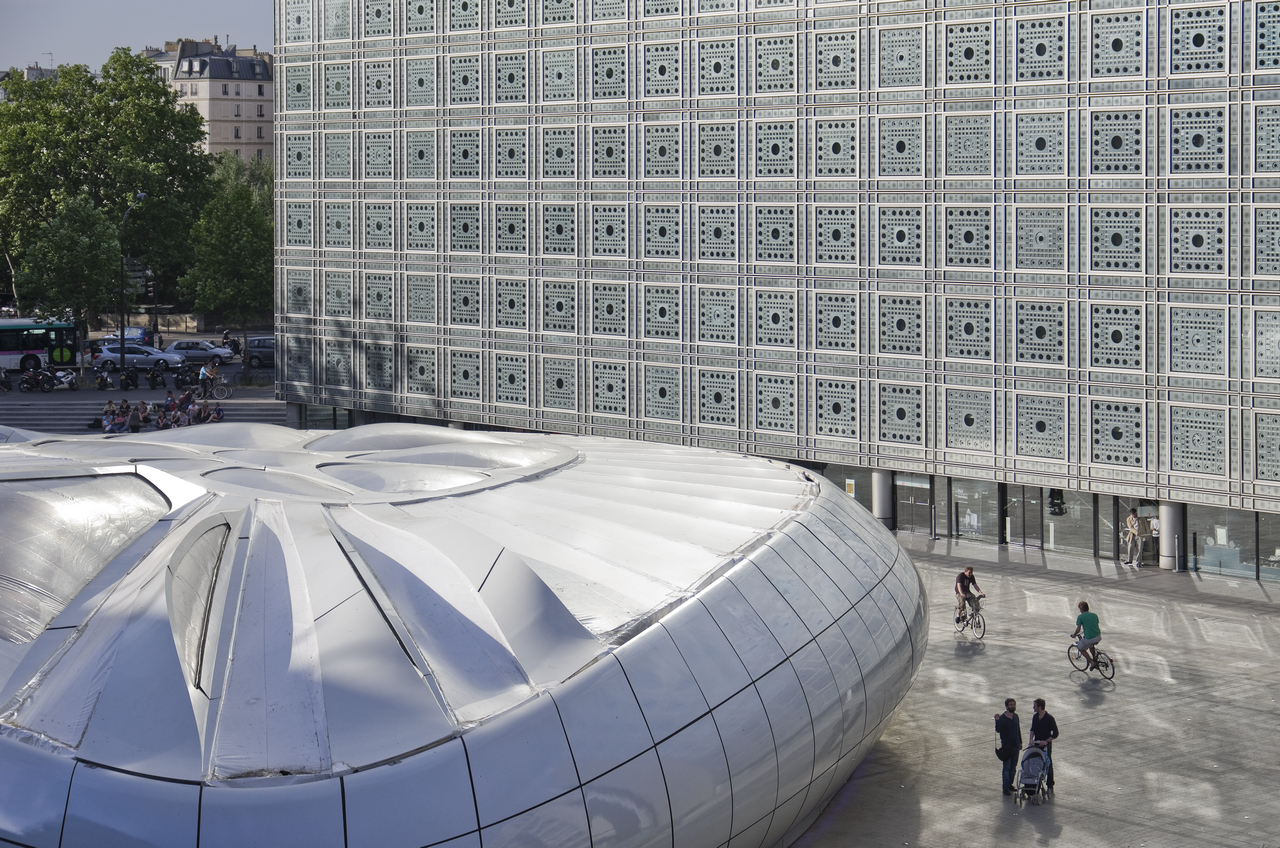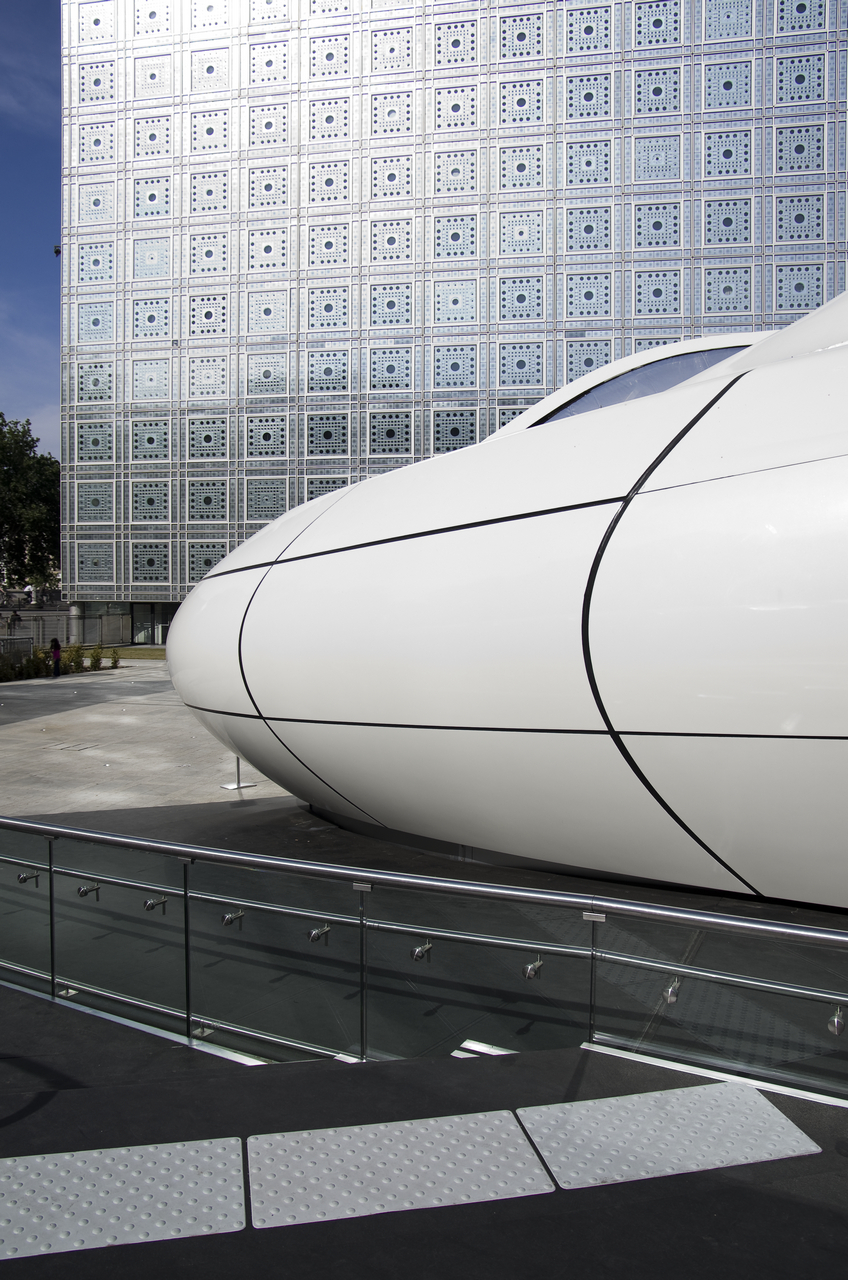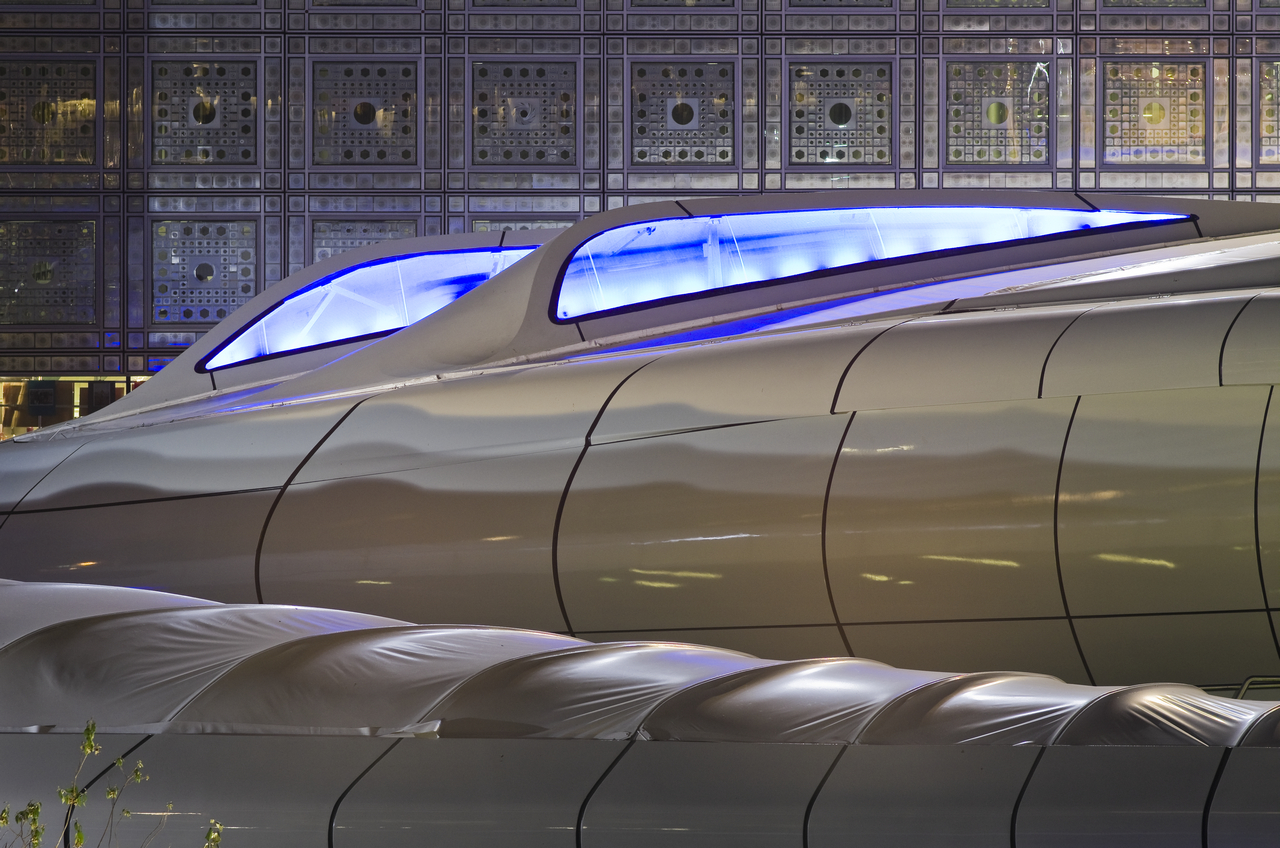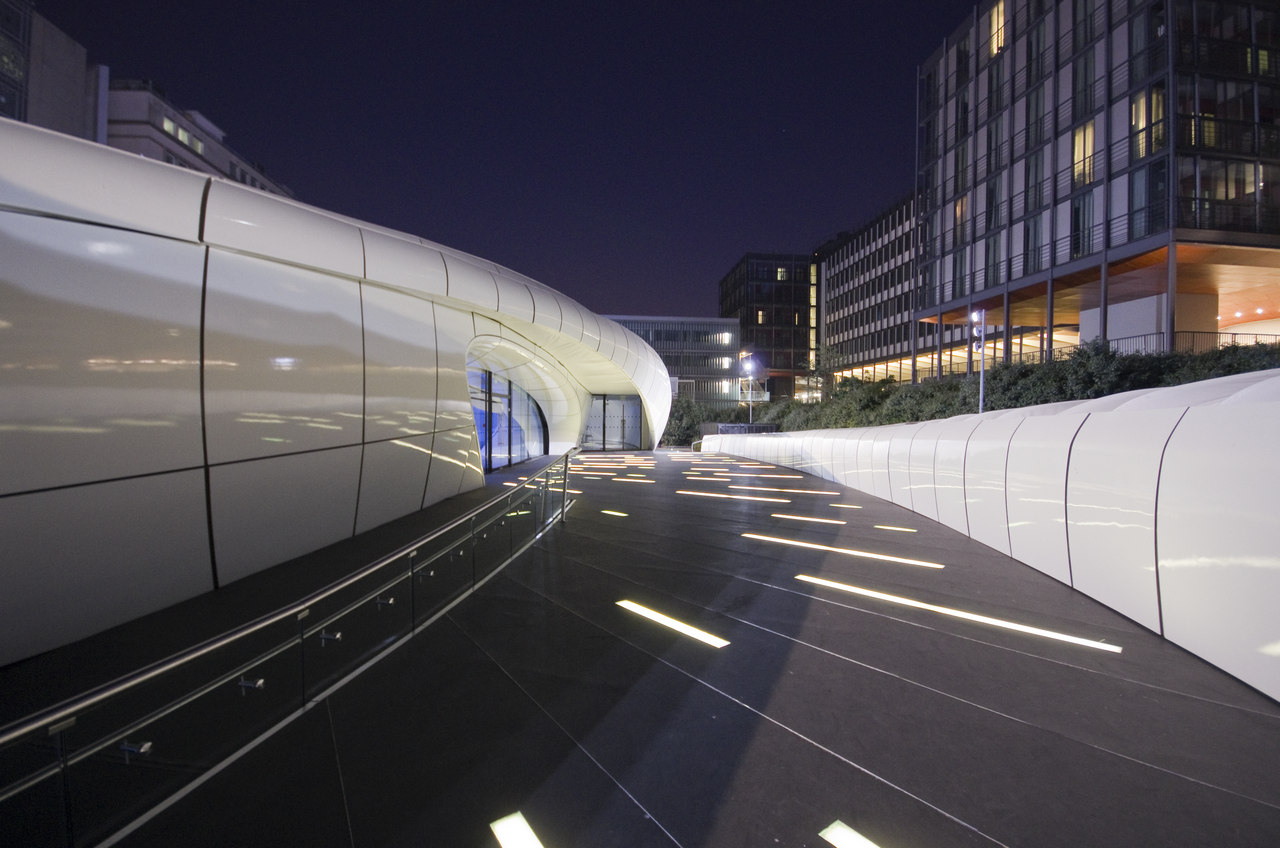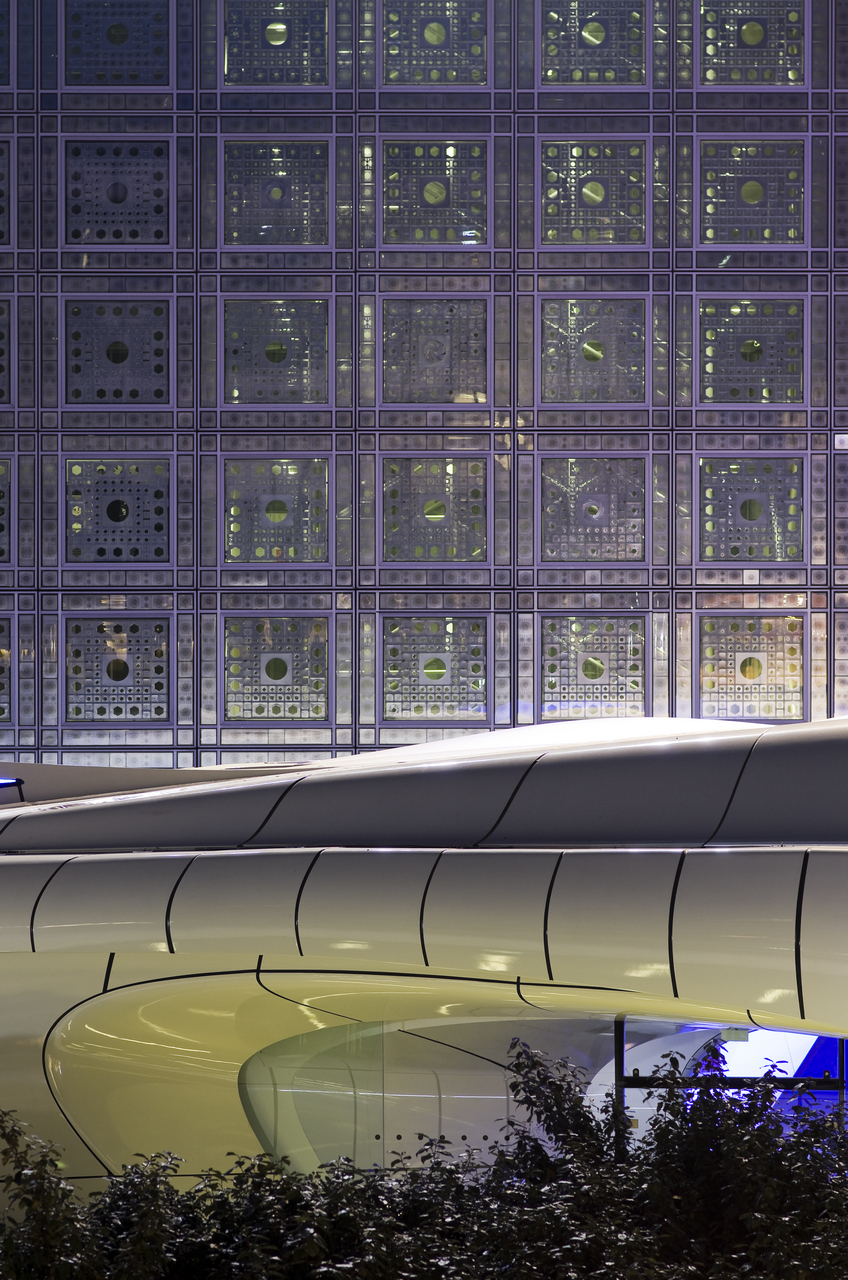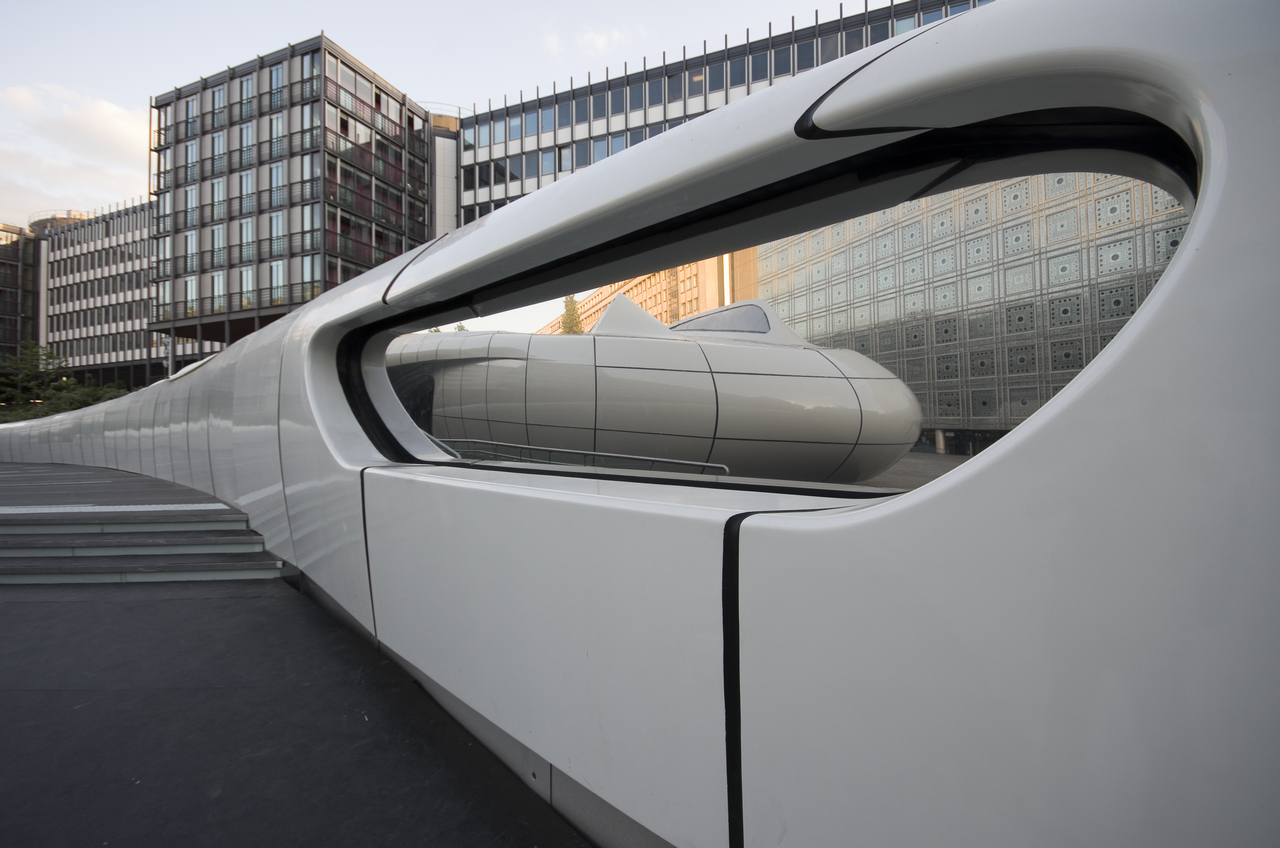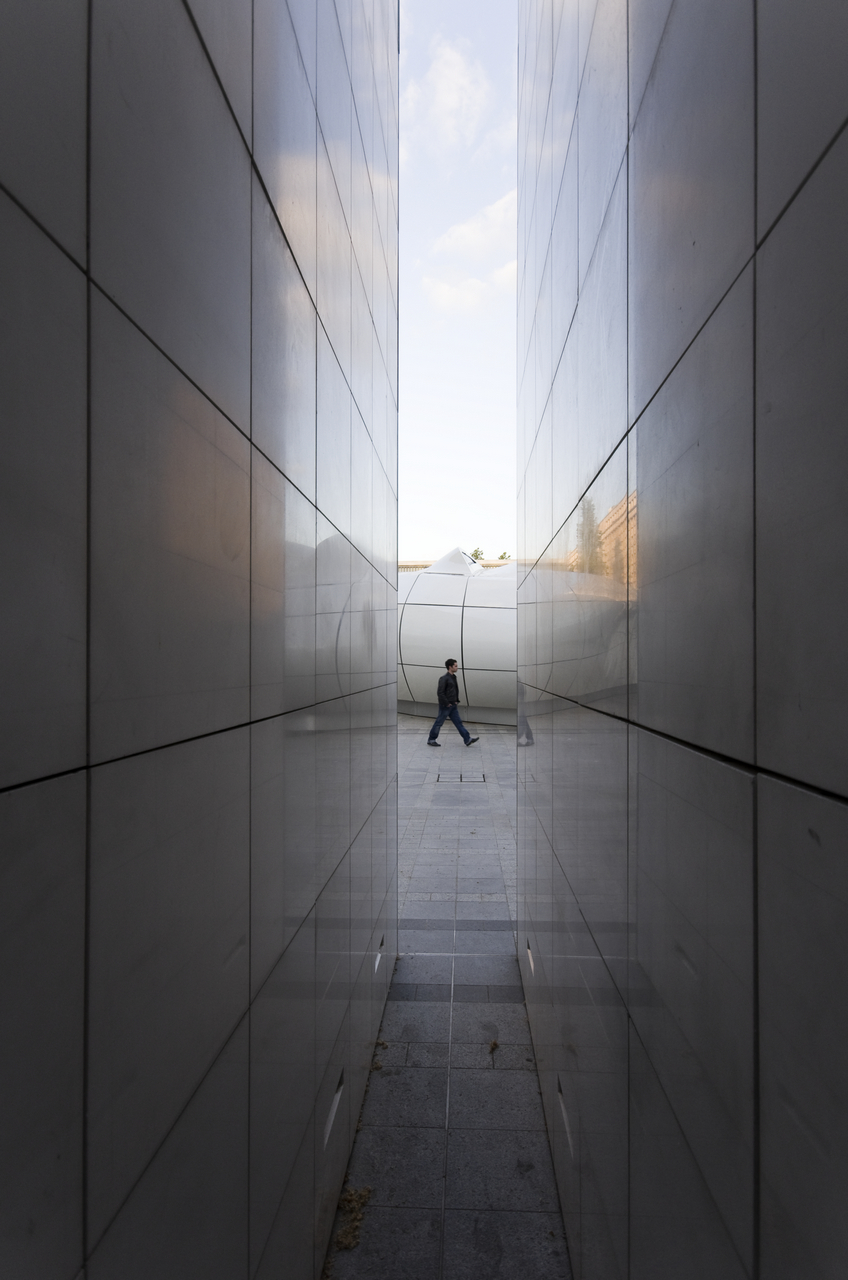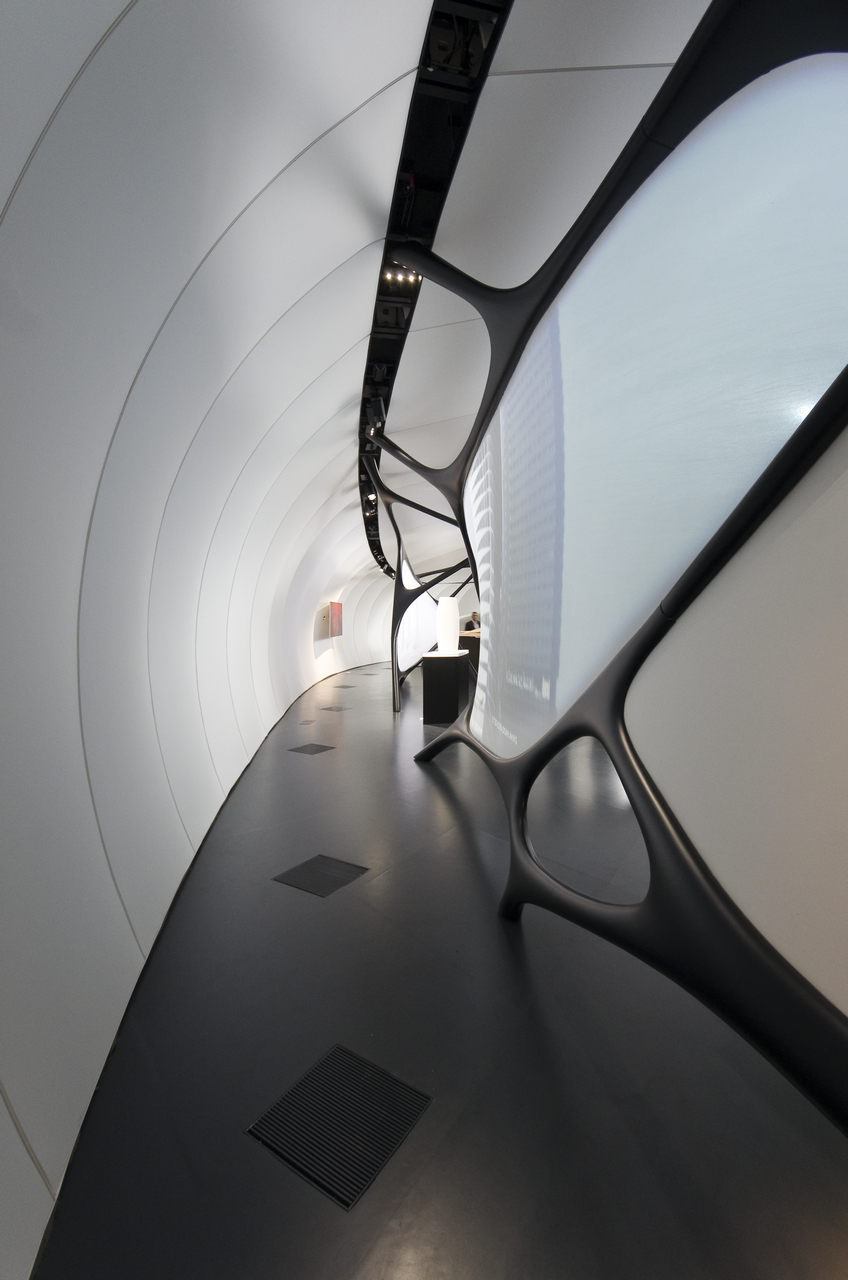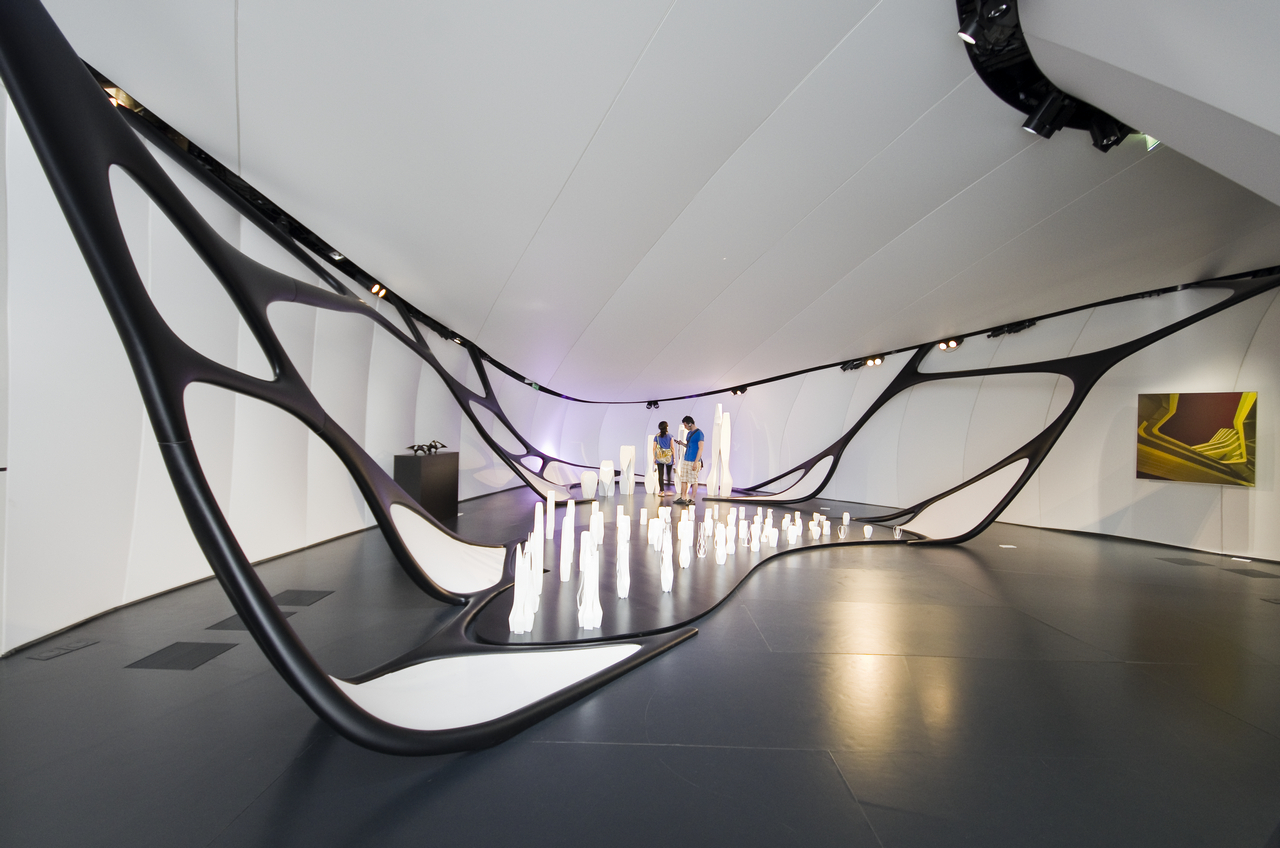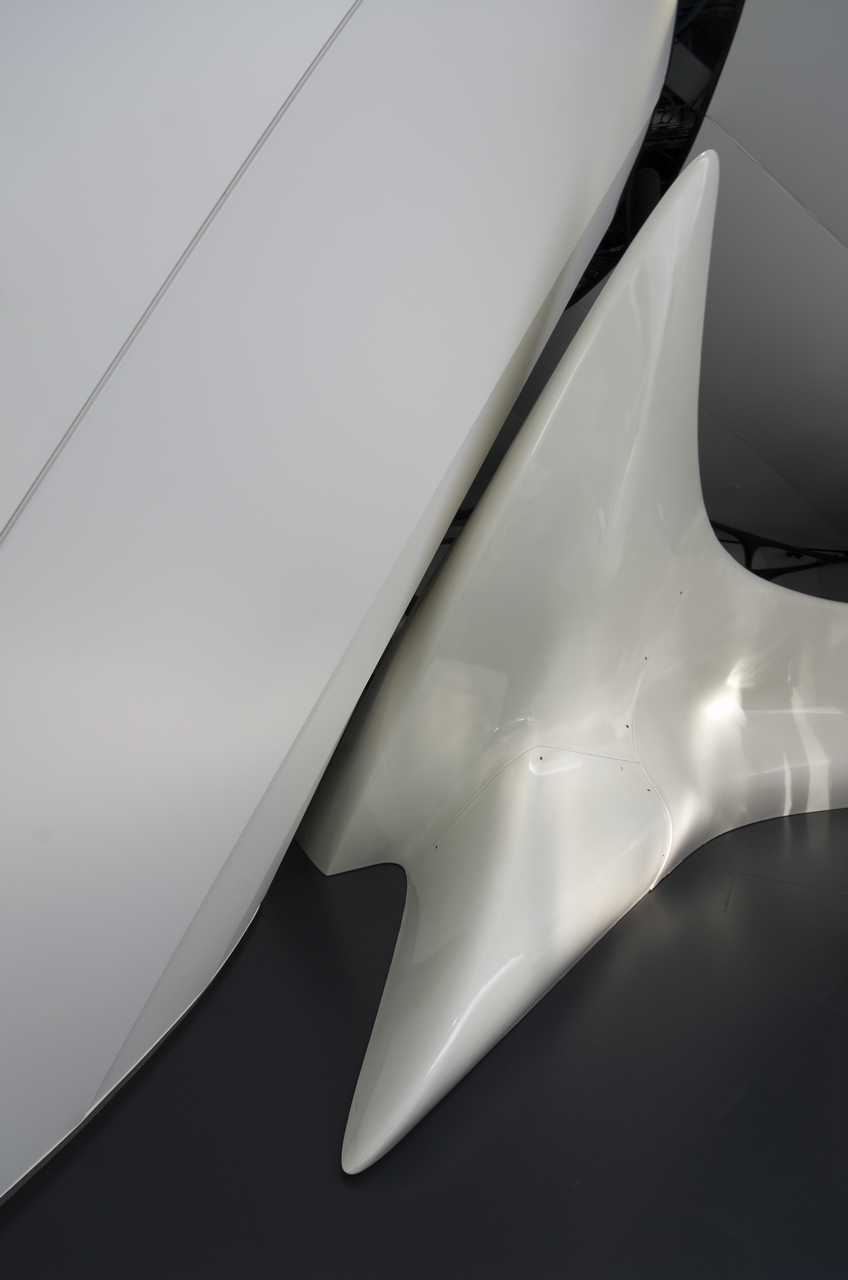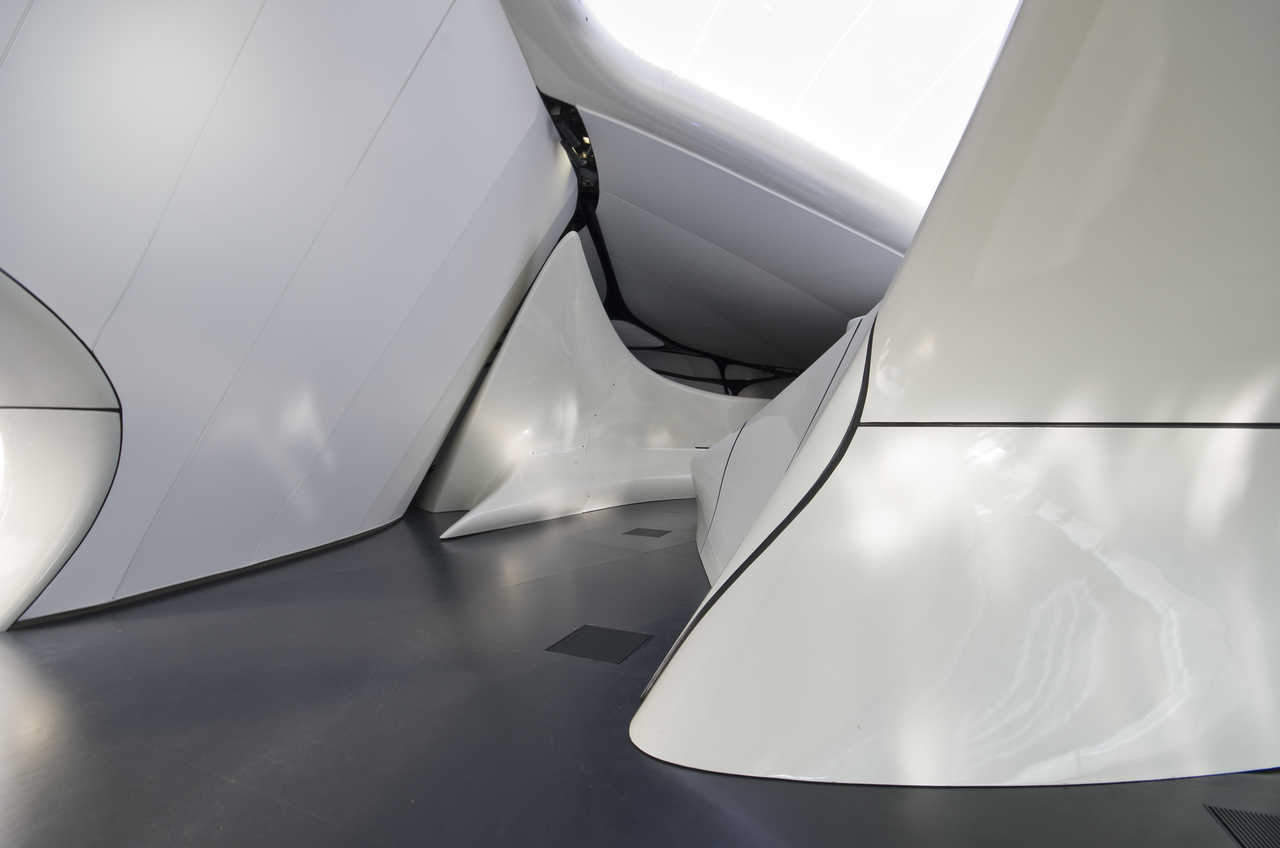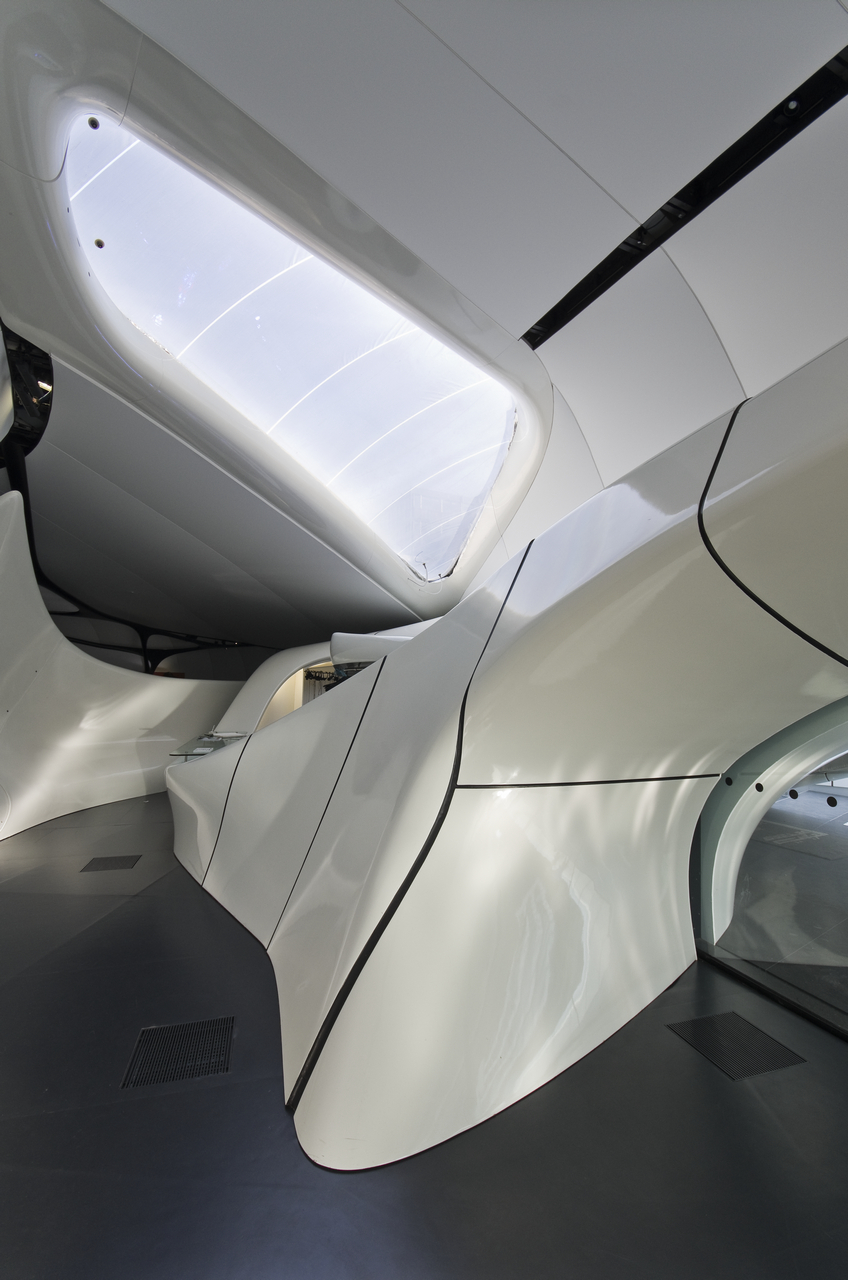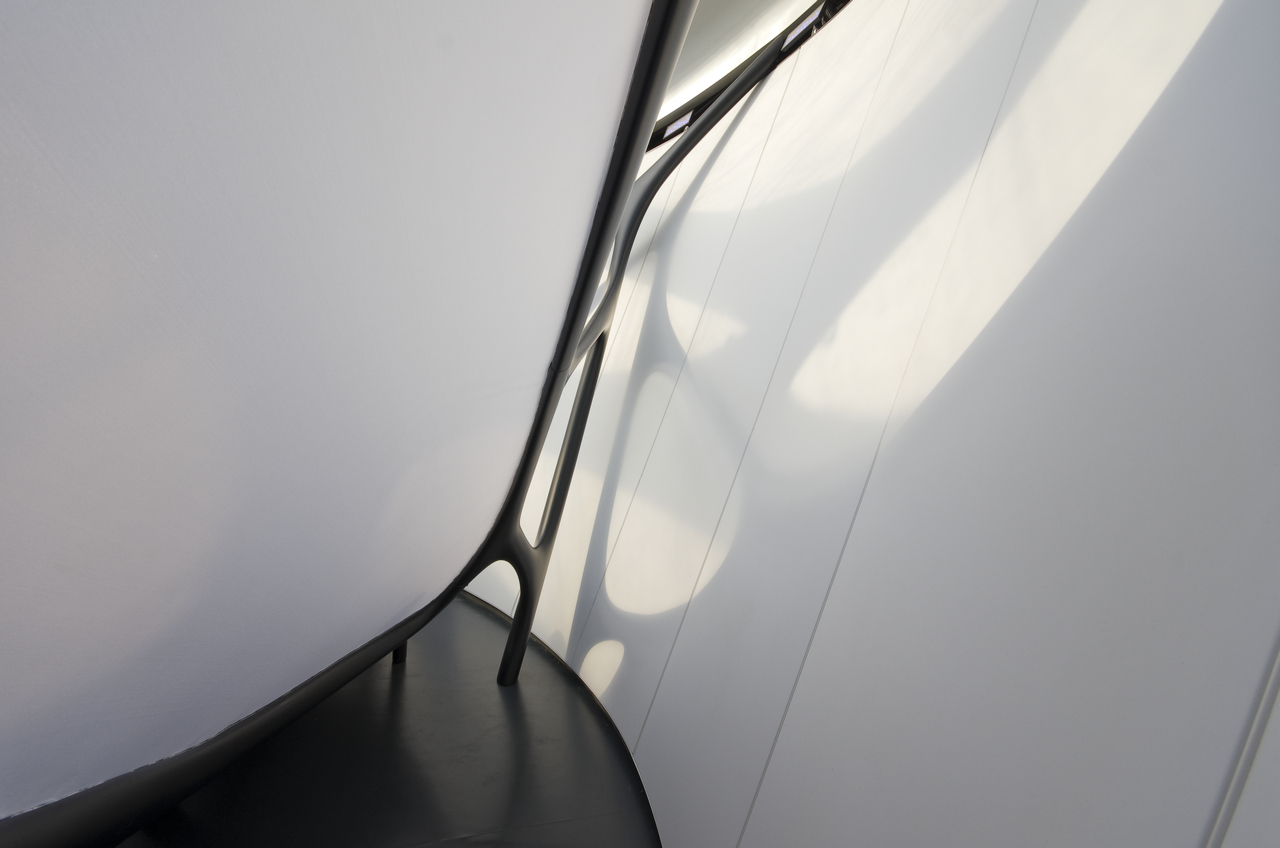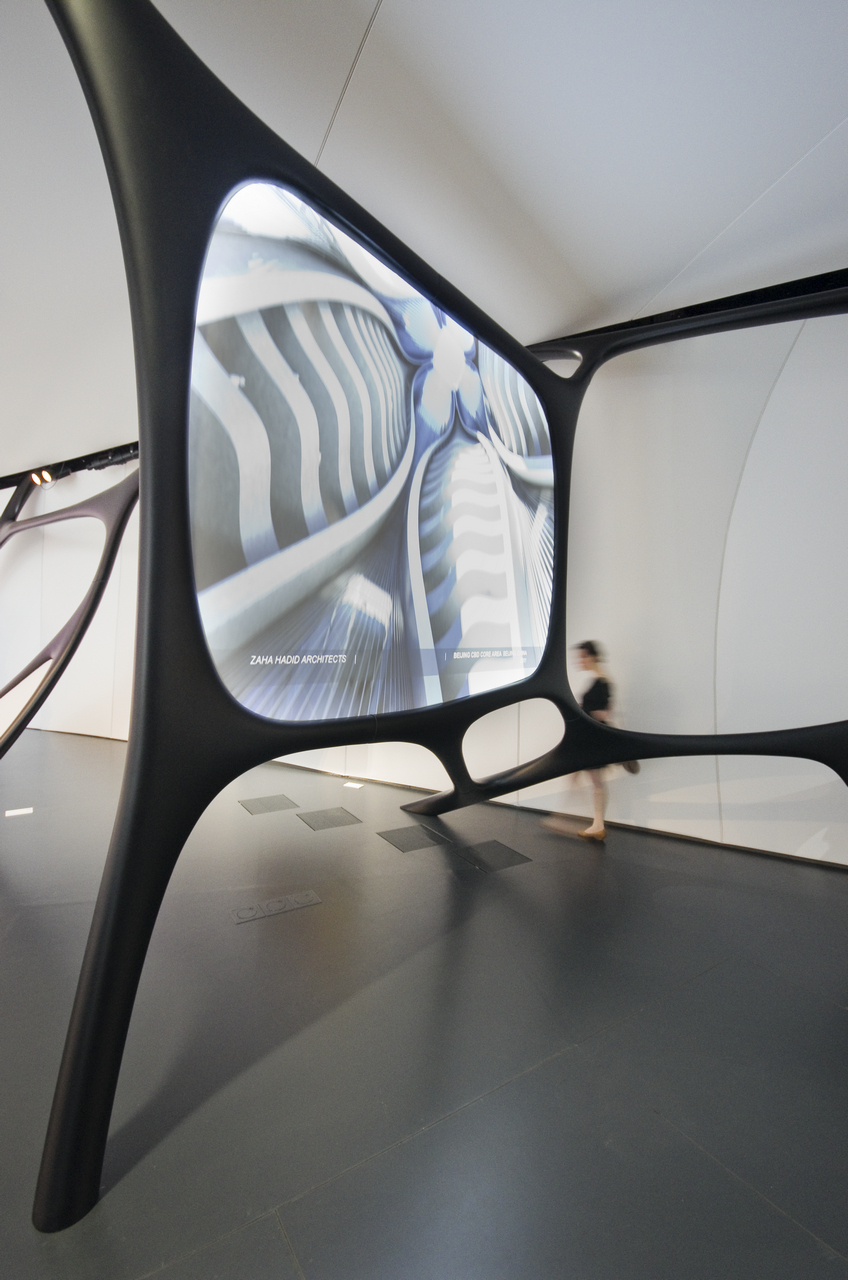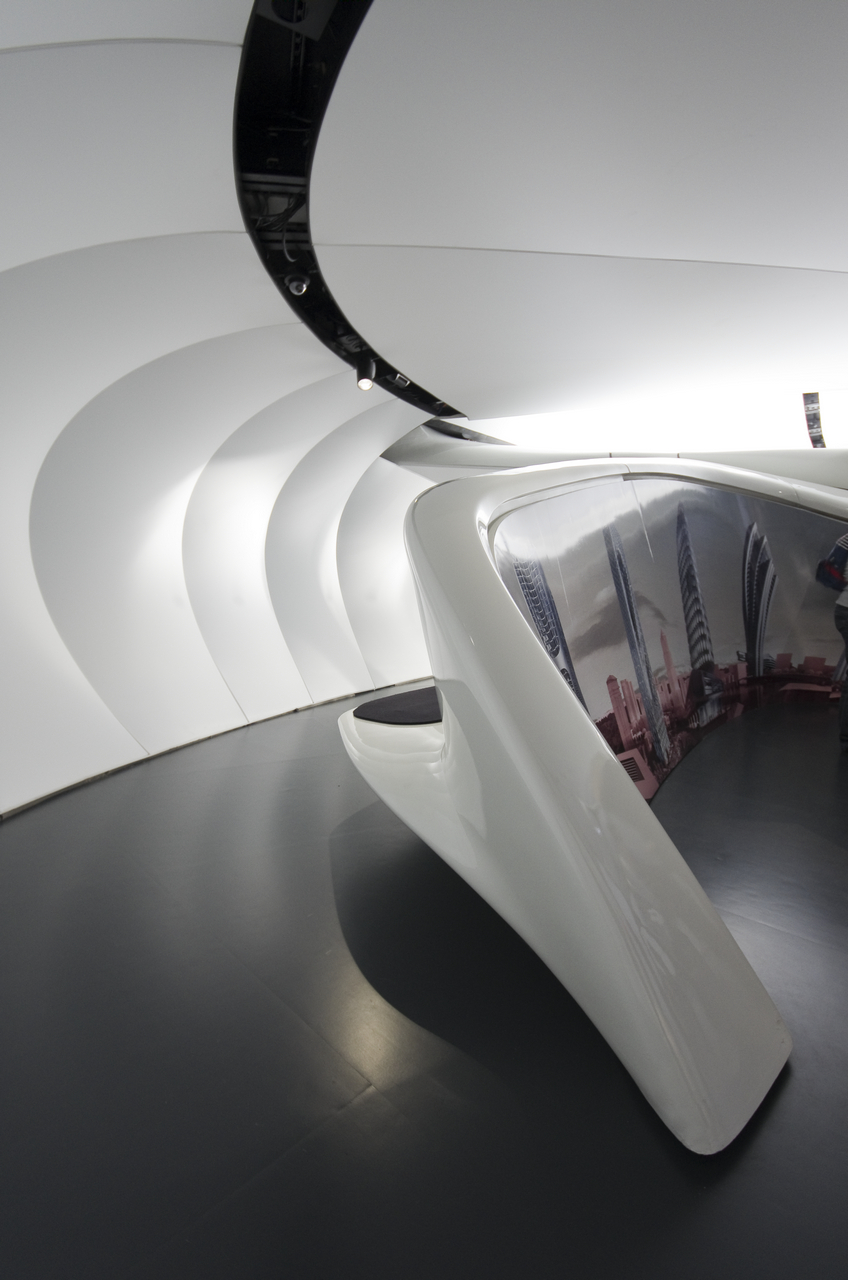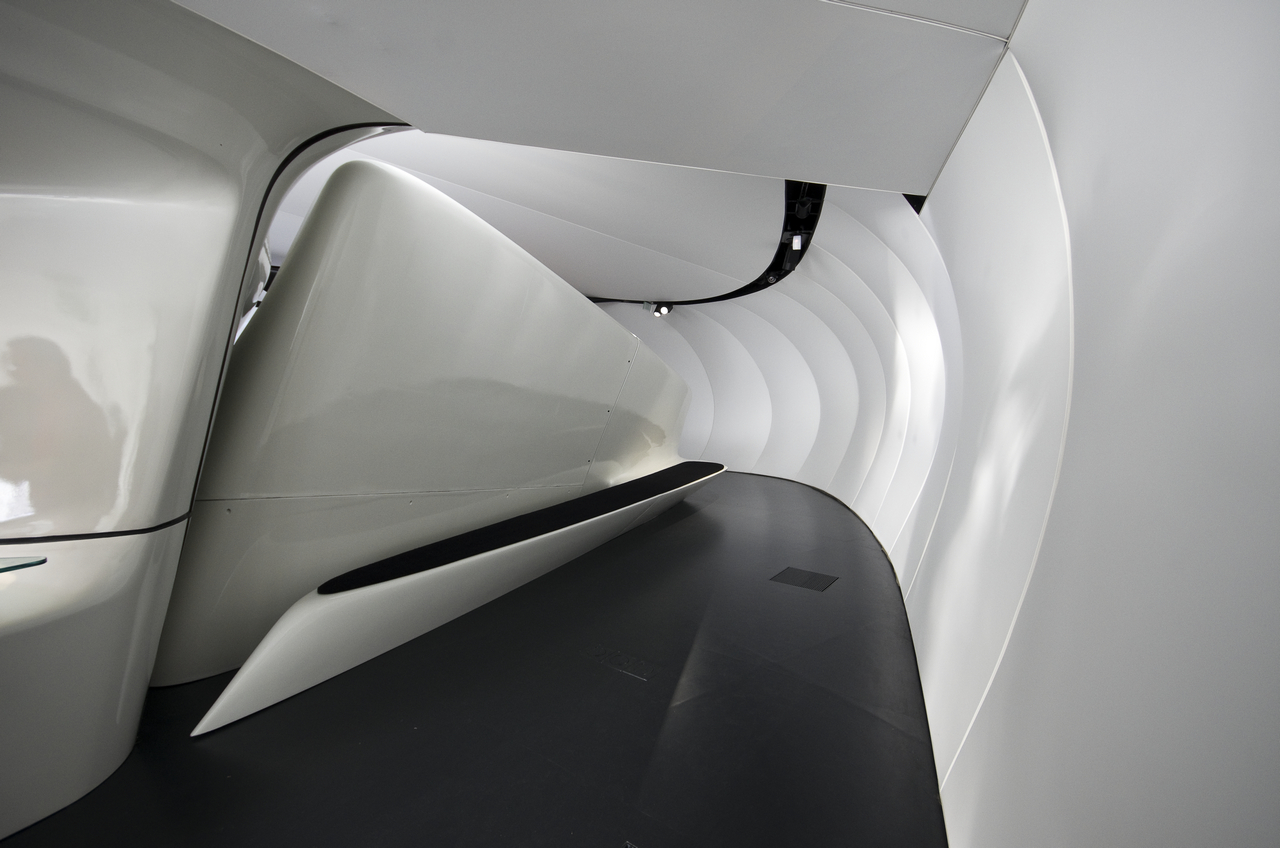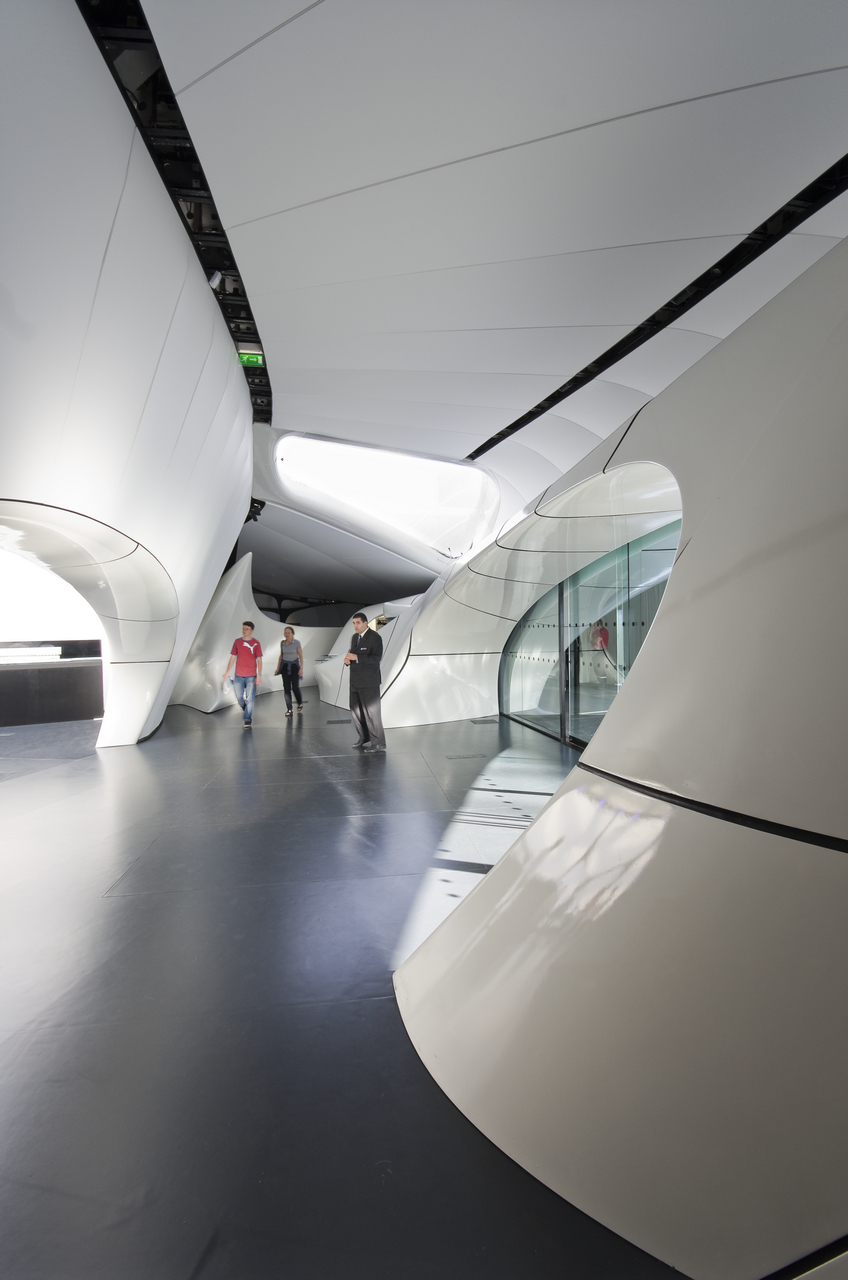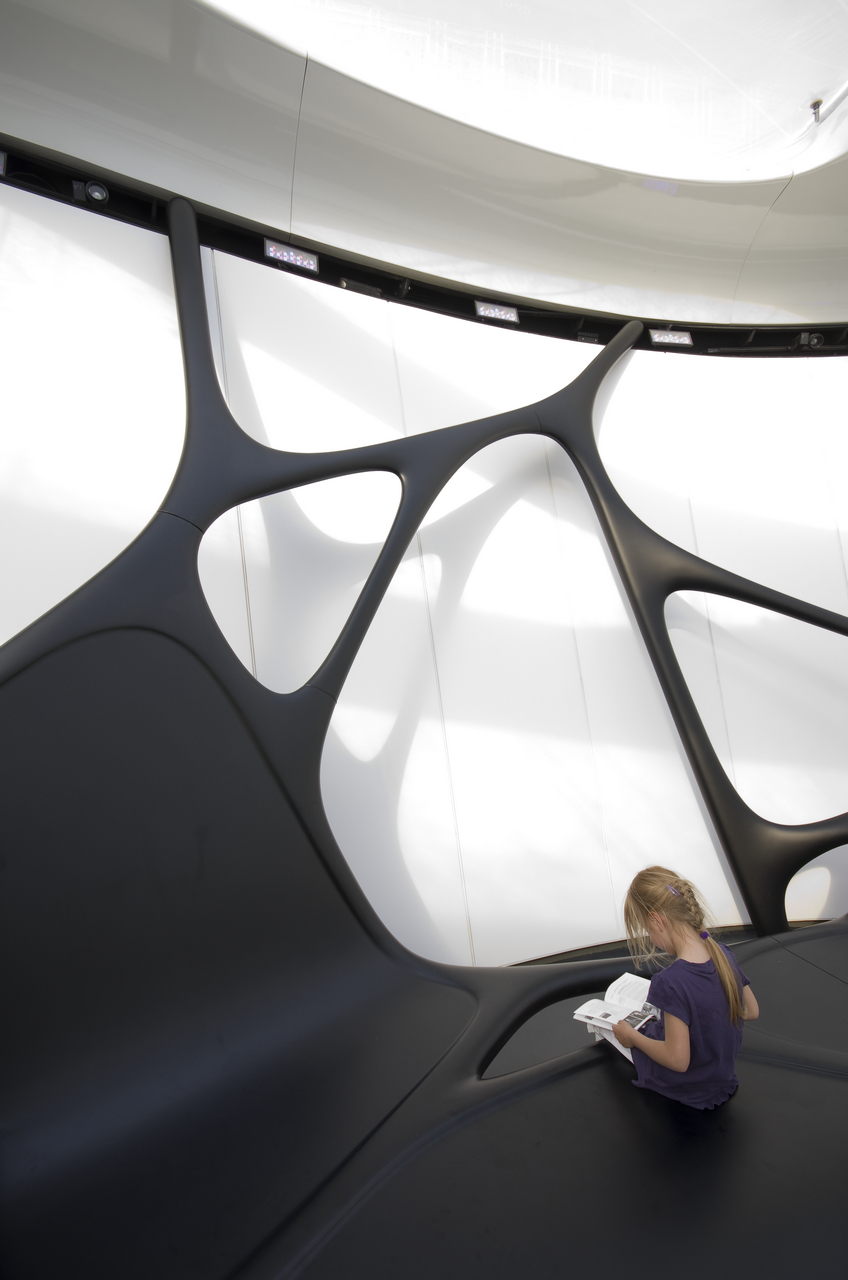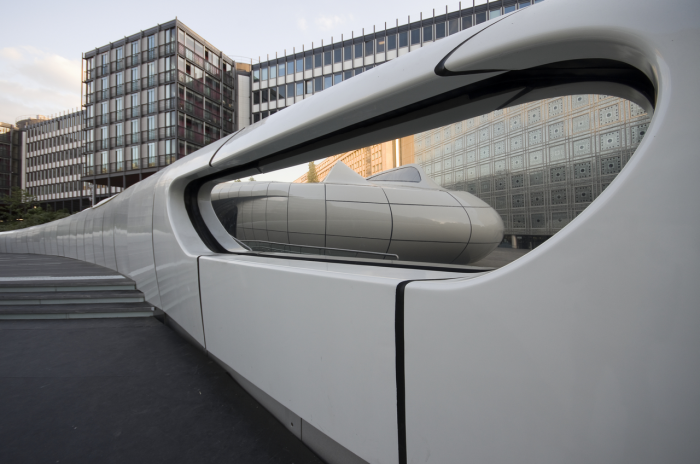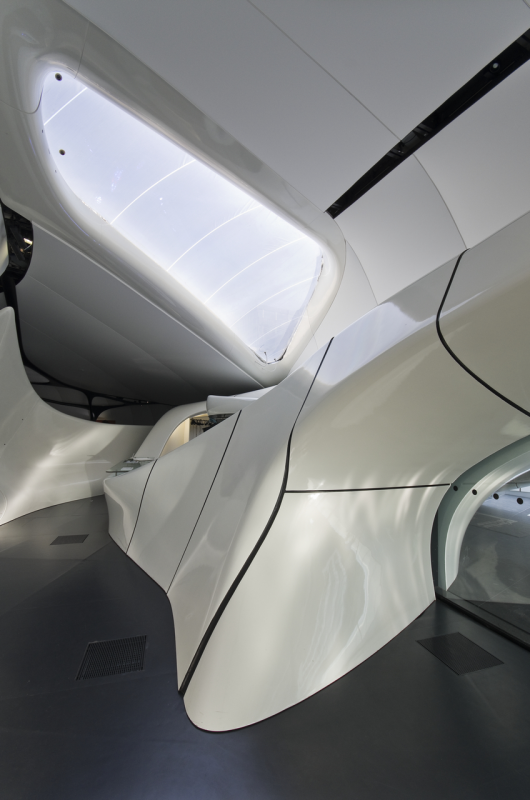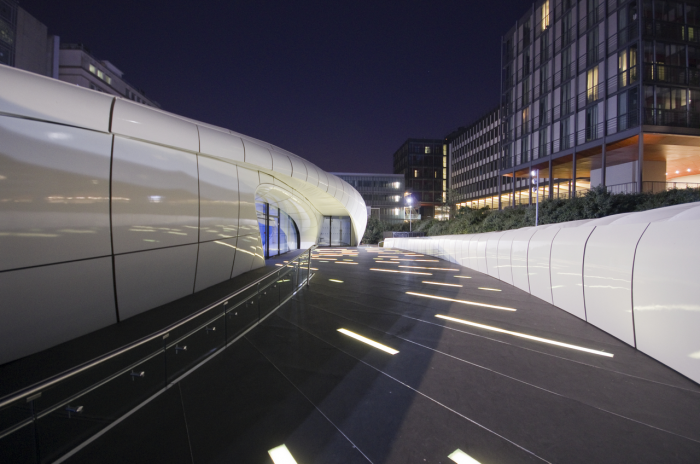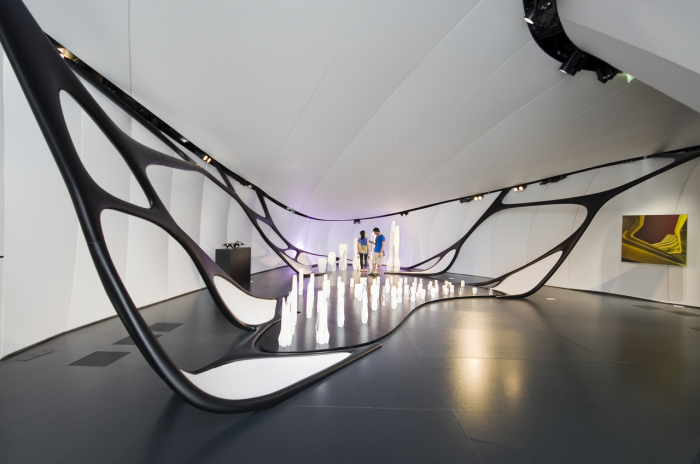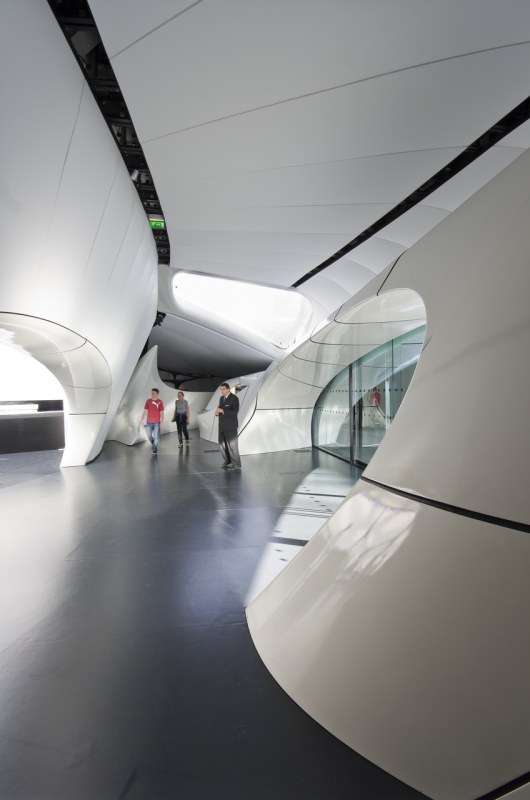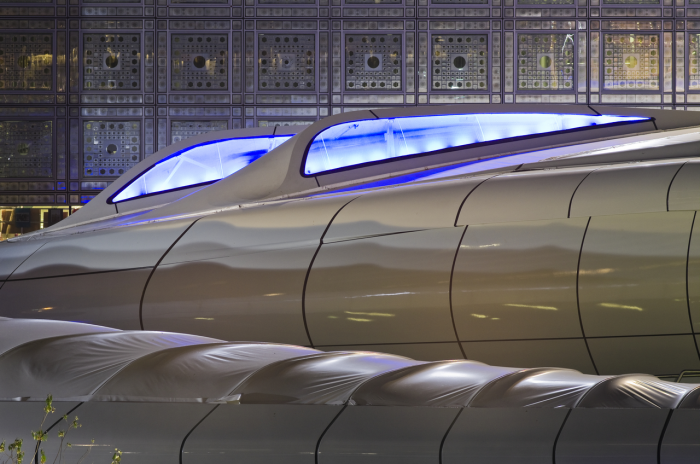A combination of Chanel’s renowned layering and detailing with Zaha Hadid Architects’ iconic dynamic and fluid design, ultimately gives us this mobile art pavilion, a beautiful masterpiece capturing the essence of both designers. Consistent with Zaha Hadid Architects‘ experimentation on continuous transformations and smooth transitions, this pavilion explores natural organizational systems while also showing a deep understanding of the functional necessities of the exhibition. Evolved from the spiraling shapes found in nature, the fluid geometry provides a continuum of space and a system of logic that allows functional adaptations to easily be made and introduced without breaking the spatial rhythm.
A torus is a fundamental diagram used for the exhibition. Distorting this shape provides a constant variety of exhibition spaces to keep the visitor engaged while influencing a sense of movement throughout the interior. In the center of the pavilion is a naturally lit courtyard designed for visitors to gather and reflect on the exhibition. In order to provide easy transport the pavilion is made of a succession of reducing arched segments. The partitioning seams, an unavoidable structural element, become a strong formal feature, helping achieve Zaha Hadid Architects‘ challenge of translating the intellectual and physical into the sensual.
Materials for the pavilion include: a façade constructed from fiber reinforced plastic, the roof PVC, ETFE roof lights, the primary structure was created from 74t steel and has over 1752 different steel connections, and the secondary structure consists of aluminum extrusions.
The form of the 700 sqm Chanel Pavilion is a celebration of the iconic work of Chanel, unmistakable for its smooth layering of exquisite details that together create an elegant, cohesive whole. The resulting functional and versatile architectural structure of the Pavilion is a series of continuous arch-shaped elements, with a courtyard in its central space.
An artificial light behind the translucent ceiling washes the walls to emphasize the ‘arched’ structure and assists in the creation of a new artificial landscape for art installations. A large roof light opening dramatically floods the entrance in daylight to blur the relationship between interior and exterior. In addition to the lighting and color effects, the spatial rhythm created by the seams of each segment gives strong perspective views throughout the interior.
The 65 sqm central courtyard has large transparent openings to the sky above and is designed to host events as well as provide an area for reflection after visiting the exhibition. The courtyard serves as an intermediate space between the exhibition and public area of the Pavilion. In light of the extensive shipping between cities, the steel structure has been designed to be built in under one week, which is essential for an ephemeral pavilion. With a direct visual connection to the courtyard, the 128 sqm terrace continues the dialogue between the Pavilion’s exterior and interior. During an event, the two spaces can be linked to become one large event zone.
Reflective materials allow the exterior skin to be illuminated with varying colors which can be tailored to the different programmes of special events in each city. The dichotomy between the powerful sculptural mass of the Chanel Pavilion’s structure and the lightness of its envelope create a bold and enigmatic element.
The Pavilion’s exterior develops into a rich variety of interior spaces that maximize the potential to reuse and rethink space due to the innate flexibility of its plan. The total fluidity of the Chanel Pavilion’s curvilinear geometries is an obvious continuation of Hadid’s 30-years of exploration and research into systems of continuous transformations and smooth transitions. With this repertoire of morphology, Zaha Hadid is able to translate the ephemeral typology of a pavilion into the sensual forms required for this celebration of Chanel’s cultural importance.
Project Info:
Architects: Zaha Hadid Architects
Location: Arab World Institute, Université Pierre et Marie Curie, 1 Rue des Fossés Saint-Bernard, 75005 Paris, France
Design: Zaha Hadid with Patrik Schumacher
Project Architect: Thomas Vietzke, Jens Borstelmann
Project Team: Helen Lee, Claudia Wulf, Erhan Patat, Tetsuya Yamasaki, Daniel Fiser
Client: Chanel; Chanel Mobile Art
Area: 29.0 m2
Photographs: Stefan Tuchila
Project Name: Chanel Mobile Art Pavilion
